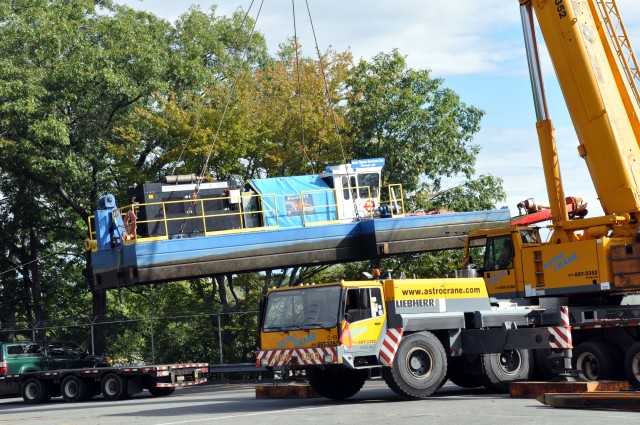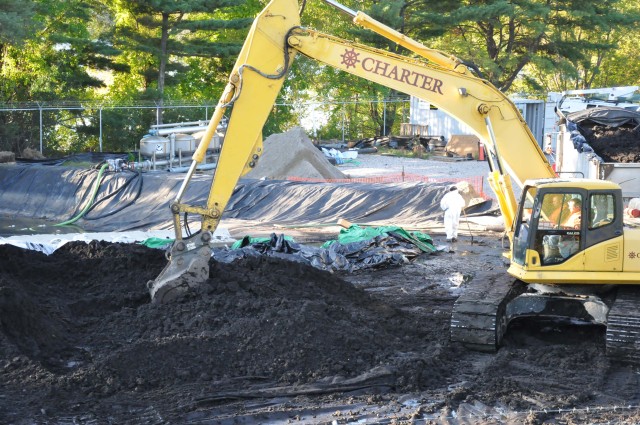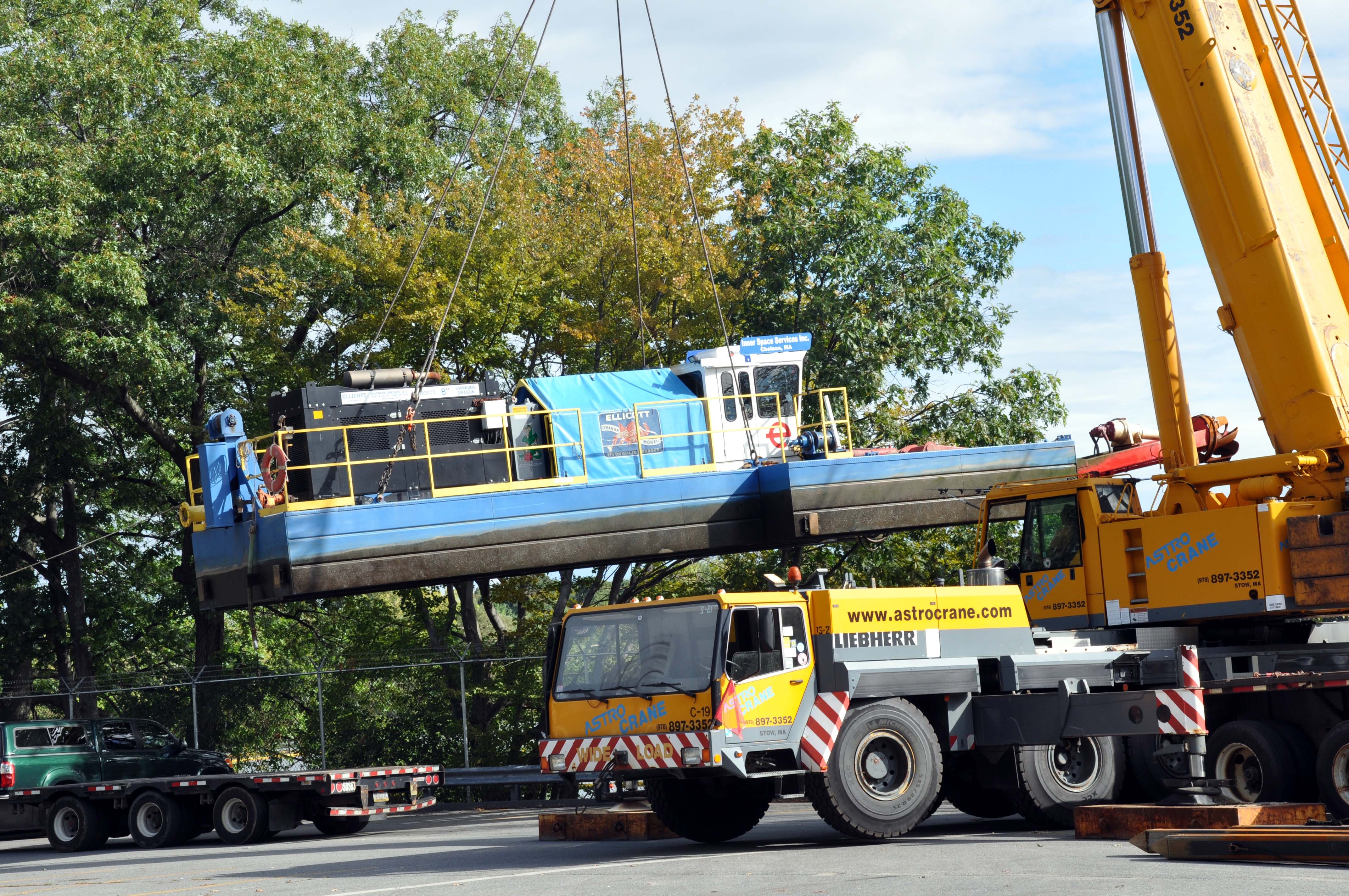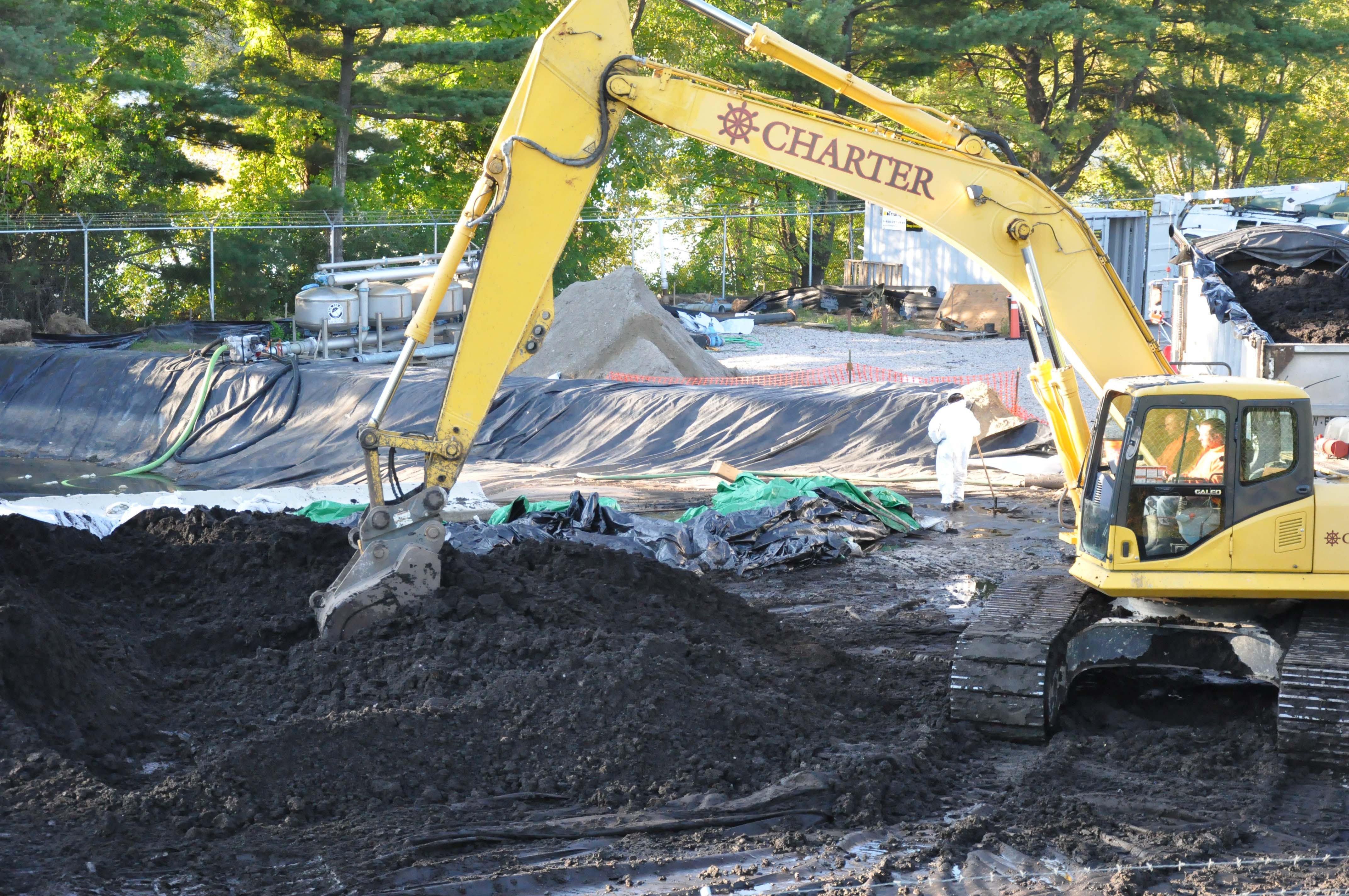When a towering crane pulled a dredging barge out of Pegan Cove, swung it through an opening in the tree line and deposited it onto the adjacent parking lot at Natick Soldier Systems Center on the morning of Sept. 9, the most visible part of a $2.8 million PCB cleanup was complete.
The project was made necessary by a transformer rupture that occurred behind Building 5 sometime during the mid 1980s, according to Jim Connolly, an environmental scientist and restoration program manager at the U.S. Army Garrison-Natick.
"They cleaned it up on land ... relatively quickly," said Connolly of the initial reaction to the transformer accident. "They didn't chase it into the lake until a little bit later."
PCBs released during the accident traveled through storm drains and settled at the bottom of Lake Cochituate. Connolly pointed out that the last decade was spent determining whether the PCB levels were harmful.
"The difficulty is that it's kind of a limited problem," Connolly said. "We figured out relatively quickly it's safe to swim in the lake. It was safe to drink the water."
Consuming fish from the lake became the issue. A year and a half ago, NSSC agreed with the Environmental Protection Agency that a risk could exist.
"In the end, we decided there was a possibility - not a likelihood, in our opinion - a possibility that eating fish could cause a risk," Connolly said.
The actual cleanup took place during this summer and was overseen by Charter Environmental of Boston. Inner Space Services of Maine did the dredging.
"Essentially, there were what are called three 'hot spots' out here," said Laurie Lee Mason of Inner Space. "We took the PCBs out of those three hot spots."
Mason said that Inner Space used the barge, which is 56 feet, 6 inches long and weighs 51,000 pounds, to remove an estimated 3,000 cubic yards of material from the cove.
"What we ended up doing was coming back in and putting a sand cap on top of that," Mason said. "That's pretty typical when you're dealing with these kind of decontaminations."
The removed sediment was then dried, re-tested and trucked to a hazardous-waste disposal site.
"Technically, because of the relatively low PCB concentration, it isn't actually hazardous waste," Connolly said. "The PCBs are hazardous."
As Mason watched the barge being lifted out of the cove, she reflected on the project.
"The Army was great," Mason said. "They were very cooperative. The EPA was down here every week monitoring things. We were very pleased with the way the project went."




Social Sharing